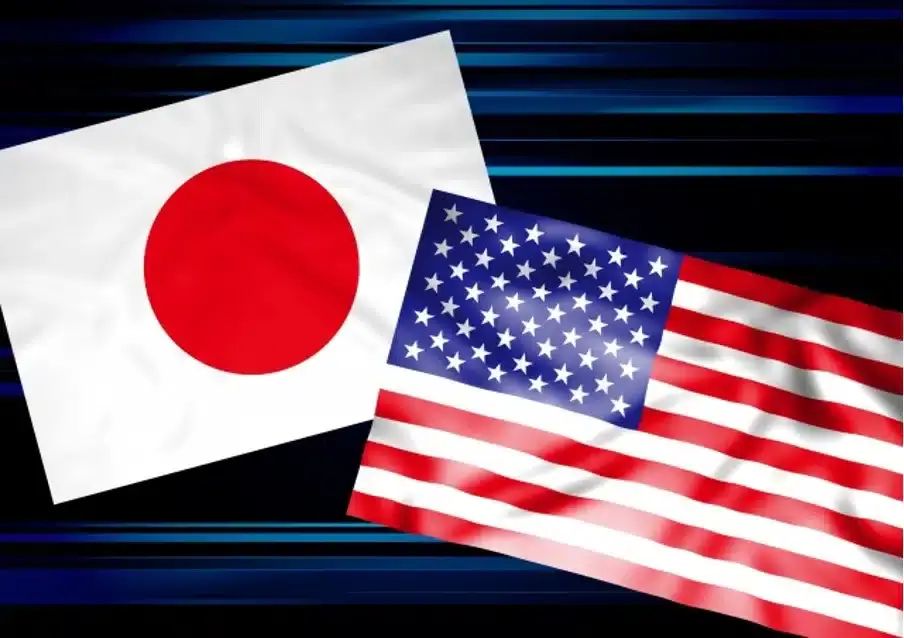Company Splits in Japanese Corporate Law: Detailed Explanation of Types, Procedures, and Special Cases

Corporate spin-offs under Japanese Corporate Law (日本の会社法) are a powerful tool for achieving business reorganization and management efficiency. This refers to the organizational restructuring that involves separating and establishing specific business divisions independently or transferring them to other companies. Spin-offs are utilized for a wide range of management strategies, such as business selection and concentration, intra-group reorganization, launching new ventures, and divesting unprofitable businesses. The legal basis for corporate spin-offs is clearly defined in Japanese Corporate Law, and strict procedures are required. This article will explain the specific types of spin-offs under Japanese Corporate Law, detailed procedures, protection of rights for shareholders and creditors, and special cases such as simplified and short-form spin-offs, taking into account practical considerations. A spin-off not only transfers assets and liabilities but also comprehensively inherits rights and obligations related to the business, including employment contracts, various licenses, and transactional relationships. However, there are exceptional procedures in place to protect stakeholders such as shareholders, creditors, and workers, which deviate from this principle of comprehensive succession. Properly executing these procedures is essential to ensure the legal validity of the spin-off and to avoid future disputes. This article aims to deepen the practical understanding of corporate spin-offs under Japanese Corporate Law for shareholders, executives, and legal department members of companies considering such restructurings.
Overview and Types of Company Splits Under Japanese Corporate Law
In Japan, a company split is defined under the Japanese Companies Act as a corporate reorganization act where a joint-stock company or a limited liability company (the splitting company) transfers all or part of its rights and obligations related to its business to another company (the successor company) or to a company established as a result of the split (the newly established company) (Japanese Companies Act, Article 2, Paragraphs 29 and 30). The main purposes of such reorganizations are to improve management efficiency, specialize and consolidate specific business divisions, or establish joint ventures with other companies in response to the ever-changing economic environment.
There are mainly two types of company splits: “absorption-type splits” and “incorporation-type splits.”
Absorption-Type Company Split
An absorption-type company split is a corporate division in which an existing company (the splitting company) transfers all or part of its rights and obligations related to its business to another already established company (the successor company). This method is used to transfer a specific business division to a separate existing company, aiming to reallocate business operations and efficiently utilize management resources. Unlike business transfers, an absorption-type company split has the advantage of transferring rights and obligations comprehensively, which eliminates the need for individual contract transfers. This feature enables swift business reorganization.
Incorporation-Type Company Split
An incorporation-type company split is a corporate division in which an existing company (the splitting company) transfers all or part of its rights and obligations related to its business to a newly established company (the successor company). This method is utilized when seeking to independently operate a specific business or to launch it as a new specialized company. The effective date of the incorporation-type company split is the date of the registration of the establishment of the new company, as stipulated under Article 764, Paragraph 1 of the Japanese Companies Act. This approach is particularly effective when one wishes to build a new business entity without being constrained by the existing organizational structure.
Classification by Method of Consideration Delivery
Company splits in Japan are also classified by the method of consideration delivery.
Incorporation-type Split (Physical Split)
The incorporation-type split, also known as a physical split, refers to a company split where the shares as consideration are received by the company itself that inherits the business (the splitting company). The successor company delivers shares, cash, or other forms of payment to the splitting company. This method is adopted for purposes such as turning a business into a subsidiary or transferring it to another company, where the splitting company receives consideration and reinvests it. By receiving consideration for the transferred business, the splitting company can secure new capital and strengthen its management structure.
Demerger-type Split (Personal Split)
The demerger-type split, also known as a personal split, refers to a company split where the shares as consideration are directly received by the shareholders of the splitting company. As a result, the shareholders of the splitting company often become shareholders of the successor company, which is personalityized by the direct return of benefits to the shareholders. However, the Japanese Company Law abolished the provisions for this type of demerger in its enforcement in May 2006 (Heisei 18). Currently, to achieve a similar effect to the demerger-type split, an incorporation-type split is performed, and then the shares received by the splitting company are distributed to its shareholders as dividends. This legal amendment is important for understanding the concept of personal splits under the old Commercial Code and the practical responses under the current Company Law. When encountering old literature or customary expressions, it is essential to clearly distinguish between this historical background and the current legal treatment to avoid confusion.
| Item | Incorporation-type Split (Physical Split) | Demerger-type Split (Personal Split) | ||
| Recipient of Consideration | Splitting Company | Shareholders of the Splitting Company | ||
| Type of Consideration | Shares, cash, bonds, or stock options of the successor or newly established company | Shares of the successor or newly established company | ||
| Treatment under Current Company Law | Provisions exist, widely used | Provided under the old Commercial Code, abolished under current Company Law (realized through Physical Split + Dividends) | ||
| Purpose | Subsidiarization of business, transfer of business to another company, capital acquisition for the splitting company | Direct return of benefits to shareholders, group restructuring | ||
Procedures for Corporate Splits Under Japanese Corporate Law
Due to its legal nature, corporate splits are governed by strict procedures as defined by the Japanese Companies Act. Properly executing these procedures is essential to ensure the validity of the split and to protect the rights of all parties involved.
Creation of Split Contracts and Split Plans Under Japanese Corporate Law
When conducting an absorption-type company split in Japan, the splitting company and the successor company must enter into an “absorption-type split contract” as stipulated by Article 757 of the Japanese Companies Act. This contract must include the statutory items specified in Article 758 of the Japanese Companies Act. Key items to be included are the trade names and addresses of the splitting and successor companies, details of the assets, liabilities, employment contracts, and other rights and obligations that the successor company will inherit, details of the consideration to be provided, such as shares, bonds, or stock acquisition rights of the successor company, and the effective date of the absorption-type split. It is also common practice to attach a separate document detailing the rights and obligations to be inherited, known as the “Schedule of Successor Rights and Obligations.”
In the case of an incorporation-type company split, the splitting company must create an “incorporation-type split plan” as required by Article 762 of the Japanese Companies Act. This plan must include the statutory items specified in Article 763 of the Japanese Companies Act. Main items to be included are the purpose of the new company, its trade name, the location of its head office, the total number of shares that can be issued, the names of the directors at the time of establishment, details of the assets, liabilities, employment contracts, and other rights and obligations that the new company will inherit, and the number and calculation method of the shares of the new company to be provided to the splitting company as consideration.
These split contracts and split plans are not merely formal documents. Given the nature of company splits involving the comprehensive inheritance of rights and obligations related to the business, it is extremely important to clarify what is inherited and what is not to prevent future disputes. These documents serve as the “blueprint” for business succession. In particular, the scope of inheritance of employment contracts and specific liabilities is closely related to the procedures for worker protection and creditor protection that will be discussed later, requiring very detailed and careful consideration. An incomplete or ambiguous “blueprint” increases the risk of unexpected problems or disputes arising later, such as “debts that should have been inherited were not” or “issues with the transfer of employment contracts.”
Pre-Disclosure Procedures Under Japanese Corporate Law
When conducting a company split in Japan, each party involved must prepare and keep at their head office a written document or electronic record detailing the absorption-type split agreement or incorporation-type split plan, along with other matters prescribed by the Ministry of Justice Ordinance, for a period starting two weeks before the shareholders’ meeting or from the day of notification or public notice to creditors and shareholders, until six months after the effective date of the split (Japanese Companies Act, Articles 782, 794, and 803). Shareholders and corporate creditors have the right to inspect these pre-disclosure documents and to request copies or abstracts (Japanese Companies Act, Articles 782(3), 794(3), and 803(3)).
The pre-disclosure documents include the contents of the absorption-type split agreement or incorporation-type split plan, matters related to the fairness of the split consideration, and details of significant events that occurred after the end of the last fiscal year. The transparency of this information disclosure is essential for stakeholders to fully understand the terms of the company split and to make informed decisions regarding the exercise of their rights. With adequate information provided, shareholders and creditors can assess how the company split will affect their interests and decide whether to exercise their rights to demand the purchase of shares by dissenting shareholders or to proceed with creditor objections, if necessary.
Approval Resolutions at Shareholders’ Meetings Under Japanese Corporate Law
In principle, a company split in Japan requires approval by a special resolution at a shareholders’ meeting of each party company before the effective date of the split (Japanese Companies Act, Article 309, Paragraph 2, Item 12; Article 795, Paragraph 1; Article 804). A special resolution refers to a resolution that requires the attendance of shareholders holding a majority of voting rights and the approval of at least two-thirds of the voting rights of the attending shareholders. The notice of the shareholders’ meeting must be sent out at least two weeks before the date of the meeting, as a general rule (Japanese Companies Act, Article 299, Paragraph 1).
The approval resolution at the shareholders’ meeting is extremely important in ensuring the legality and legitimacy of a company split, as it can significantly affect the economic interests of the shareholders. Particularly from the perspective of protecting minority shareholders, this approval process is strictly enforced. The approval at the shareholders’ meeting represents a management decision that the company split serves the interests of all shareholders and provides the legal foundation for proceeding with subsequent procedures.
Shareholder’s Right to Demand Purchase of Shares in Opposition to Corporate Reorganization Under Japanese Law
When a company plans a corporate reorganization that affects the interests and rights of its shareholders, those shareholders who oppose the reorganization can exercise their right to demand that the company purchases their shares at a fair price (Articles 116(1), 785(1), and 806(1) of the Japanese Companies Act).
The “opposing shareholders” who can exercise this right are, in principle, those who have notified the company of their opposition to the corporate split prior to the shareholders’ meeting and have voted against the corporate split at the said meeting (Articles 116(2)(i), 785(2)(i), and 806(2)(i) of the Japanese Companies Act). However, if a shareholder is unable to exercise their voting rights at the shareholders’ meeting or if the meeting is not held, prior notification of opposition and casting of dissenting votes are not required.
The procedure for exercising the right to demand the purchase of shares is as follows:
- Notification by the company: The company must notify or announce to the shareholders the intent to reorganize and matters related to the demand for purchase rights at least 20 days before the effective date (Articles 116(3), 785(3), 806(3), and (4) of the Japanese Companies Act).
- Advance notice of opposition by shareholders: Shareholders planning to exercise their rights must notify the company of their opposition to the proposal prior to the shareholders’ meeting.
- Casting of dissenting votes at the shareholders’ meeting: Shareholders attend the shareholders’ meeting and cast their votes against the relevant proposal.
- Exercise of the right to demand purchase of shares: Shareholders must submit a share purchase demand notice to the company within 20 days from the date of notification or announcement by the company (Articles 116(4), 785(4), and 806(5) of the Japanese Companies Act). This demand must be made within the period from 20 days before the effective date to the day before the effective date.
- Negotiation of the purchase price: After the effective date, shareholders and the company negotiate the “fair price” of the shares. This negotiation period is set for 30 days from the effective date (Articles 117(1), 786(1), and 807(1) of the Japanese Companies Act).
- Filing for price determination with the court: If negotiations are not concluded within 30 days from the effective date, either the shareholder or the company can file a request for price determination with the court within the subsequent 30 days (from the 31st to the 60th day after the effective date) (Articles 117(2), 786(2), and 807(2) of the Japanese Companies Act).
The right to demand the purchase of shares serves as a final measure to protect the economic interests of shareholders. The procedure is complex and subject to strict deadlines, so shareholders must fully understand these requirements and deadlines and respond appropriately when considering exercising their rights.
Creditor Objection Procedures Under Japanese Corporate Law
Corporate divisions in Japan can affect the succession of a company’s debts, and therefore, procedures to protect creditors are mandated by Japanese Corporate Law (Articles 789 and 810). These procedures are crucial to ensure the validity of the corporate division.
The creditor protection procedures are as follows:
- Publication in the Official Gazette: The companies involved in the division must publish a notice in the Official Gazette, accepting objections from creditors, detailing the changes in capital and debt, financial documents, and the names and locations of the companies involved. This notice must be published at least one month before the effective date to provide creditors with a period of more than one month to raise objections.
- Individual notifications to known creditors: In addition to the Official Gazette publication, the company must individually notify known creditors about the division and their right to object. However, if the company’s articles of incorporation stipulate public notice through a daily newspaper or electronic notice, individual notifications may be omitted.
- Receiving and addressing objections: If objections are raised by creditors within the objection period, the company must either make payment to the creditor, provide adequate security, or entrust sufficient assets to a trust company for the purpose of payment to the creditor (Japanese Corporate Law Articles 789, Paragraph 5, and 810, Paragraph 1, Item 5). However, this is not required if it is recognized that the division will not harm the creditor. If no objections are raised, the company may proceed with the division, assuming the consent of the creditors.
If there are deficiencies in these creditor protection procedures, the corporate division itself may be invalidated. Therefore, careful management of the procedure schedule, especially ensuring the period of more than one month for objections, is critical for the success of the corporate division.
Registration
After the effectiveness of a company split, the involved companies must carry out the prescribed registration procedures. In the case of an absorption-type split, the companies must apply for the change registration of the split company and the change registration of the successor company within two weeks from the effective date, as stipulated under Japanese Corporate Law (Article 921). For incorporation-type splits, it is necessary to apply for the change registration of the split company and the establishment registration of the new company within two weeks from the effective date (Article 924 of Japanese Corporate Law).
The effective date of an incorporation-type split is deemed to be the day when the establishment registration of the new company is completed (Article 764, Paragraph 1 of Japanese Corporate Law). By conducting these registrations, the effects of the company split come into force, and the conditions for opposition to third parties are established. The registration process is the final stage in legally completing a company split and publicizing its details, and its timely and accurate implementation is essential to ensure the legal stability of the company split.
Post-Division Disclosure Procedures Under Japanese Corporate Law
After the effective date of a company split, the splitting company and the successor company (or the newly established company in the case of a new split) must promptly create written or electronic records (post-division disclosure documents) detailing certain matters related to the company split. These documents must be kept at the principal office to accommodate inspection and copying requests from shareholders and creditors, as stipulated by Articles 801, 811, and 815 of the Japanese Companies Act.
The post-division disclosure documents include the date the company split took effect, details of the rights and obligations that were transferred, and matters concerning the delivery of consideration. This procedure ensures transparency by allowing stakeholders to continuously verify the details of the split even after its completion, thereby playing a role in preventing future doubts and disputes.
Procedures for the Succession of Employment Contracts in Company Splits
In the event of a company split, employment contracts are also inherited along with the business. From the perspective of worker protection, special procedures are established by the “Act on Succession of Employment Contracts in Company Splits” (hereinafter referred to as the “Employment Contract Succession Act”).
The splitting company must, based on the Employment Contract Succession Act, notify the workers primarily engaged in the business subject to the split in writing at least two weeks before the effective date of the company split. The notification should include the intent to carry out the company split, an overview of the business to be inherited, whether the employment contract will be succeeded, and the trade name of the successor company (or newly established company). Additionally, if there is a labor agreement with a labor union, notification is also required regarding the succession and scope of the labor agreement.
Under the Employment Contract Succession Act, if specific workers object, there is a possibility that the succession or non-succession of employment contracts may be overturned on the day the split takes effect. The splitting company must set a period (at least 13 days from the notification date to the deadline for objections) to accept objections from workers.
The negotiations with workers regarding the succession of employment contracts as stipulated in Article 5 of the Employment Contract Succession Act (the so-called “Article 5 negotiations”) are crucial procedures that can affect the effectiveness of the employment contract succession. If these negotiations are not conducted at all with certain workers, or if the explanation provided by the splitting company during the negotiations or the content of the negotiations is deemed significantly insufficient, the workers may contest the effectiveness of the employment contract succession. On this point, the Supreme Court’s decision on July 12, 2010 (the Japan IBM Company Split case) indicated that inadequacies in Article 5 negotiations could affect the effectiveness of employment contract succession. This decision clarifies the importance of not just performing formal notifications but also providing substantial explanations and conducting negotiations. Smooth consensus-building with workers is directly connected to the stability of business operations after a company split, so it is essential for managers to proceed with these procedures carefully.
Notification to the Japan Fair Trade Commission
When conducting a company split that exceeds a certain scale, a prior notification to the Japan Fair Trade Commission may be required under the Japanese Antimonopoly Act. If notification is necessary, the company split cannot be carried out for 30 days from the date of notification. However, this prohibition period may be shortened with the approval of the Japan Fair Trade Commission. Additionally, in cases where one party company holds at least nine-tenths of the voting rights of the other company, known as an “absorption-type company split within the same corporate group,” this notification is not required.
Overview of Simplified and Short-Form Splits
The Japanese Companies Act provides for “simplified splits” and “short-form splits” as special exceptions to streamline the procedures for company splits. These exceptions allow for the omission of shareholder meeting approval resolutions when certain requirements are met, aiming to expedite corporate reorganizations.
Simplified Splits
A simplified split refers to an absorption-type split procedure that can be carried out without the need for a shareholder meeting resolution by the splitting company or the successor company under certain conditions.
- Requirements for the splitting company: If the total book value of the assets to be transferred to the successor company in the absorption split does not exceed one-fifth of the net assets of the splitting company, the splitting company can omit the approval resolution of the shareholder meeting (Japanese Companies Act, Article 784, Paragraph 3, and Article 805). This applies when the impact of detaching a part of the business is considered minor for the splitting company.
- Requirements for the successor company: If the total book value of the property to be provided to the splitting company as consideration for the absorption split does not exceed one-fifth of the net assets of the successor company, the successor company can omit the approval resolution of the shareholder meeting (Japanese Companies Act, Article 796, Paragraph 2). Additionally, it is required that no loss is incurred by the successor company due to the split. This applies when the payment of consideration is considered minor for the successor company.
Simplified splits offer the benefit of simplifying procedures when the impact on shareholders is deemed small, but the conditions for their application are strictly defined. If these conditions are not met, the principle of requiring shareholder meeting approval applies.
Short-Form Splits
A short-form split refers to an absorption-type split that can be carried out without the need for a shareholder meeting resolution by the controlled company when there is a “special controlling relationship,” such as one company holding at least nine-tenths of the voting rights of all shareholders of the other company (Japanese Companies Act, Article 784, Paragraph 1, and Article 796, Paragraph 1).
This short-form split applies whether the controlled company becomes the successor company or the splitting company. This is because, in situations where a parent company effectively controls a subsidiary, the approval process at the shareholder meeting is likely to become a mere formality, thus the procedure is designed to be more efficient. However, if the controlled successor company is not a public company and shares of the successor company are to be issued in the absorption split, the split cannot be carried out using the short-form method (Japanese Companies Act, Article 796, Paragraph 1, proviso).
Short-form splits significantly contribute to the efficiency and acceleration of procedures, mainly in internal group reorganizations. Since a clear criterion of special controlling relationship is established, the judgment of application requirements is relatively straightforward.
Court Cases Related to Company Splits in Japan
Company splits in Japan inherently affect various stakeholders, leading to the formation of court cases concerning their legality, the scope of rights and obligations transferred, and the fairness of the compensation involved. This section will focus on court cases other than those seeking injunctions or declaring invalidity of company splits.
Court Cases on Debt Succession
In company splits, the comprehensive succession of rights and obligations is the principle; however, under certain circumstances, exceptional debt succession may be recognized.
- Debt succession due to the continuation of a trade name: The Supreme Court of Japan’s decision on October 29, 2013 (Heisei 25), addressed a case where a golf course operating company, after leaving the obligation to return deposit money from a previous golf club, transferred its golf course business to a newly established company through a company split. The new company continued to use the trade name of the former golf club. The court recognized the analogy application of Article 22, Paragraph 1 of the Japanese Companies Act (formerly Article 26, Paragraph 1 of the Commercial Code), affirming the new company’s responsibility to return the deposit to the golf club members (creditors). This decision indicates that even if a debt is not listed in the company split plan, the business transferee who continues to use the transferor’s trade name may be held responsible for the debts incurred by the business. This is because the continuation of a trade name can potentially mislead creditors into believing that the business entity remains the same, thus recognizing responsibility from the perspective of creditor protection.
- Succession of lease agreements and liquidated damages obligations: The Supreme Court of Japan’s decision on December 19, 2017 (Heisei 29), considered a building lease contract that allowed the lessor to terminate the contract and claim liquidated damages when the lessee substantially changed the contracting party. The court ruled that even if the lessee transferred its contractual position through an absorption-type company split, the lessee’s argument that it should not bear the liquidated damages obligation due to the split was against the principle of good faith. Although this decision was based on the specifics of the case, it suggests that the succession of contractual positions through a company split can affect the duties of good faith between the contracting parties. When considering a company split, it is essential to thoroughly examine individual contract clauses and how they are affected by the split.
Discussions on the Fairness of Compensation
In company splits, it is crucial from the perspective of protecting the interests of shareholders and creditors that the splitting company receives fair compensation commensurate with the value of the assets transferred. However, there is a possibility that the splitting company may not receive appropriate compensation, especially in cases where the company is in a de facto state of bankruptcy, potentially resulting in unexpected disadvantages for creditors. The assurance of fairness in compensation and the protection of creditors in such situations continue to be subjects of debate. The assessment of compensation in company splits directly affects the economic interests of stakeholders, necessitating an objective and rational evaluation.
Summary
Company splits under Japanese Corporate Law are a powerful legal tool enabling strategic business reorganization. There are two main types: absorption-type splits and incorporation-type splits, each utilized for different management purposes such as reallocating existing businesses or establishing new independent ventures. Additionally, splits are classified into company-type splits and division-type splits based on the method of consideration, with the latter being realized in the form of “physical division + distribution” under the current Japanese Corporate Law.
The procedures for company splits range from the creation of split agreements/plans to pre-disclosure, approval resolutions at shareholders’ meetings, share purchase requests from dissenting shareholders, creditor objection procedures, registration, post-disclosure, and procedures related to the succession of employment contracts. These are all strictly defined by Japanese Corporate Law and are essential to protect the rights of various stakeholders such as shareholders, creditors, and workers, ensuring the legal validity and transparency of company splits. In particular, in the succession of employment contracts, it is crucial that notifications and consultations based on the Employment Contract Succession Law are properly conducted, as deficiencies can affect the effectiveness of the contract succession. Furthermore, simplified procedures such as simplified splits and summary splits are permitted under certain conditions, allowing for swift organizational restructuring.
Japanese case law on company splits highlights complex practical issues such as the possibility of exceptional debt succession contrary to the principle of universal succession and the importance of consultation in the succession of employment contracts. These precedents demonstrate the importance of carefully assessing legal risks and managing relationships with stakeholders in the planning and execution of company splits.
Monolith Law Office has a wealth of experience in providing legal services related to this theme to numerous clients within Japan. With several English-speaking attorneys qualified in foreign jurisdictions, we can offer specialized support from multiple perspectives on the complex legal challenges of company splits under Japanese Corporate Law. From considering company splits to executing procedures and addressing subsequent legal challenges, we provide comprehensive legal services to support the smooth business reorganization of companies.
Category: General Corporate





















